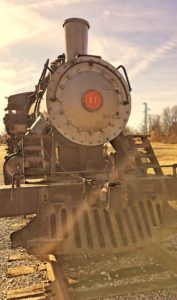Surprisingly, my WorldTimZone personal website has been in operation for at
least seventeen years. Over the past decade, various web pages on the
site have been added and tweaked, but the blog has been dormant. In part
that’s due to time constraints and focus elsewhere — what is a personal
website all about, anyway? — but also due to technical issues.
This site began like much of the early World Wide Web as a collection of basic
web pages hand-coded in HTML. In those days we simply called them “websites”
and they were personal, quirky, delightful, and unique. People everywhere were
creating “firsts”: these were the days where nothing was on the Web and
people were creating wonderous new websites about things important and trivial.
In those early days, people tried to guide others to additions and improvements
to their sites be adding “New” or “Updated” tags or special “What’s New” pages,
but this felt superfluous on a Web where everything was always changing and
continually being updated . Plus, this quickly became a maintenance burden
for hand-coded pages, especially as the websites grew in scope and size.
And then came the blog (short for web-log) and turned everything upside down.
I mean that almost literally: at the start, blogs primarily were about update
posts linked and shown on a reverse chronological timeline page. “Newest on top”.
The other main attraction of blog software was that it took away the
maintenance burden. Instead of hand-coding the HTML pages, the software would
manage a database of information and dynamically build the web pages while
handling all the linking and relevant updates across the website.
Like many, I was enticed by the blog and threw out my homegrown pages and
incorporated blog software into my website sometime in 2001. I started with
b2/cafelog and added a blog section to my site. B2 was
fairly simple and was the most usable blog software that I found. I also
appreciated that it was Free Software licensed under the GNU General
Public License (GPL). It wasn’t until a year or so later that I realized how
much this mattered.
Somewhat abruptly the creator of b2 disappeared and there
was a scramble to figure out how to keep fixing and improving it. A number of
groups took the b2 software and created their own versions (forks). I evaluated
several and liked some of the ideas in b2evolution, but the one that most
attracted me was WordPress. From the start, WordPress strongly emphasized
usability. I resonated with this focus and was happy when it was the named the
official successor to b2 .
Since I’m a programmer, and because the blog software wasn’t overly
complicated, I was able to mash the early version of WordPress into my site’s
existing b2/cafelog software to create a
wicked WordPress/b2 hybrid/variant, giving me the best of both worlds.
WordPress countinued development and improvements and I eventually upgraded
the site to WordPress version 1.2 (more or less).
Due to transferring hosting providers, database configuration changes, and
some vaguely rememebered challenge I had upgrading my WordPress variation,
my blog got stuck on WordPress 1.2 and time slipped by. I’m honestly shocked
that it was still working (albeit was throwing PHP warnings into the logs).
The only plugin I’d been using at the time was MarkDown 1.0b4. PHP
compatibility kept it mostly working and I know I rewrote some of the
WordPress internals (and disabled others) to stay functional. I finallly
got around to upgrading and reconfiguring the site to use the current
WordPress 4.9.1. Counting all releases (regular, maintenance, and security
fixes) in between, this is jump of 280 WordPress releases! If you only count
the major point releases, this is 30 releases later. Either way you count it,
it’s a big upgrade.

 Look at that — a new post and a new theme. When I began work on the lamppost theme last year, I also had an idea of doing a Dawn Treader theme. It’s been frustratingly slow to develop. According to the file timestamps on my computer, it appears I first started working on it on March 31, 2006. It’s been an off-and-on process since then, mostly of five or ten minutes at a time with long gaps in between. I finally decided it was time to let it go. So, in the best “it’s good enough, but will likely be changed again soon” spirit of the web, here it is.
Look at that — a new post and a new theme. When I began work on the lamppost theme last year, I also had an idea of doing a Dawn Treader theme. It’s been frustratingly slow to develop. According to the file timestamps on my computer, it appears I first started working on it on March 31, 2006. It’s been an off-and-on process since then, mostly of five or ten minutes at a time with long gaps in between. I finally decided it was time to let it go. So, in the best “it’s good enough, but will likely be changed again soon” spirit of the web, here it is.
